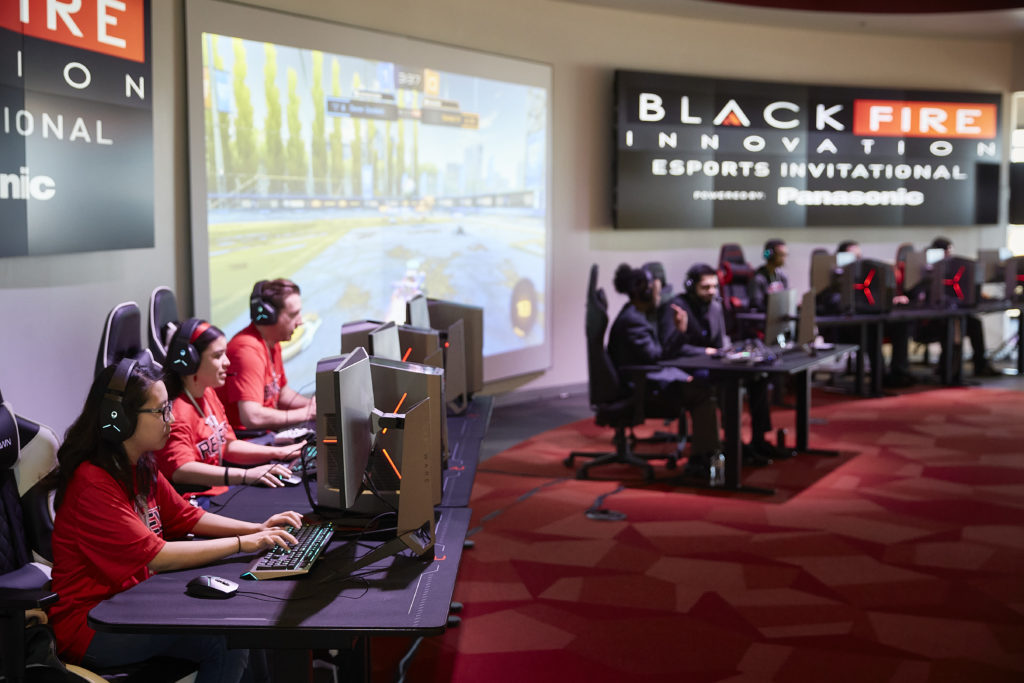June 24, 2020
4 min read
The video game industry is taking over entertainment and Esports is now a career, not a hobby. Twitch, launched in 2011 and acquired by Amazon in 2014, is a video live streaming service that has close to 4 million unique broadcasters and YouTube's popular Gaming channel has over 85M subscribers. It's obvious that video gaming platforms have generated huge audiences but Esports event coverage from traditional broadcast outlets like ABC and ESPN is driving it as a competitive sport. According to a Business Insider Intelligence report, Esports viewership is expected to grow 9% annually – from 454 million in 2019 to 646 million by 2023. Because of this, a truckload of marketing dollars is pouring into Esports.
“What’s driving this growth is obviously the saturation of technology,” explains Joe Conover, Strategic Initiatives Manager, Panasonic Live Events. “High bandwidth and hardware in the home has been on an uptrend even before the COVID-19 pandemic and Esports has proven to be successful even when outside a home environment."
With the growth of online Esports viewership, we're also seeing a significant rise in live and broadcast Esports venues, which are brick-and-mortar spaces designed to host tournaments and events. Rob Brambila, Panasonic Sales Support Engineer, knows a thing or two about Esports venues. Previous to working at Panasonic, Brambila was the technical producer at Blizzard Entertainment and was a key figure in building the Blizzard Arena in Burbank, CA, which is home to the successful Overwatch League. "Traditional live sporting events originated long before broadcast ever existed," explains Brambila, "and when television came around, sports leagues initially tried to emulate the stadium experience. Over the years of honing their craft, broadcasters have created an experience that you can't get live in a stadium. Esports took a lot of stuff from traditional sports, but at the same time, I think they're more willing to take broadcast technology to the next level since its 'game' is based in technology."
In House vs. Broadcast
When sports leagues realized they could expand their audience through a broadcast, they capitalized on personalities and broadcast technology, whether it was through play-by-play announcers and sideline reporters, slow motion replays, motion graphics, etc. For Esports events, there are typically two shows being presented – one for the live audience and one for the audience watching at home. At the Blizzard Arena, according to Brambila, Blizzard Entertainment wanted to create a live broadcast that would make people watching at home wish they were in-venue for a more immersive experience.

An example of an Esports tournament
During the first season of Overwatch league, Blizzard had a viewership of over 20 million people - a number most cable broadcasters would kill for. “Game developers realized the growth of their communities and since Esports tournaments were essentially using their intellectual property, they decided to create their own leagues,” says Brambila. “They borrowed a lot of things from sports production and were very meticulous about creating an entertaining environment where people could come to the arena and enjoy the event on a whole different level.”
Even during the COVID-19 pandemic, Esports viewership has continued to rise due to the fact Esports broadcasters were targeting remote production from the beginning using robotic PTZ cameras controlled remotely. "The goal was to have one central centralized control room and be able to remotely manage all of the productions from one site," reveals Brambila. "Each franchise with a team in the league would own or manage their own venue, which included infrastructure. By season three, they want to be 100% remote, meaning that there was little to no crew at each of these events and almost completely managed remotely. So they already had the game plan in place and I think that's why people are taking Esports so seriously now. This market segment is going to be the one that really truly pushes broadcast technology.”
During the COVID-19 pandemic where gathering in large crowds is still unavailable, there has been a 25% increase in online broadcasts through Twitch. “As live events come back, live venues will thrive again but I think this will be a big play for the camera market because a space will need sophisticated build-outs for players broadcasting from their homes,” explains Jared Darensbourg, Panasonic Territory Account Manager. “They're gonna need remote setups for virtual broadcasts."
College Game Day
Perhaps more than any other sport, Esports is ideal for social distancing, especially in higher education where distance learning is the new norm. With March Madness canceled and college football’s uncertain return, collegiate Esports programs are ramping up quickly. Founded in 2016, NACE (National Association of Collegiate Esports) has over 170 member schools, 5,000+ student athletes and $16 million in Esports scholarships and aid. Member schools compete in different game titles such as Overwatch, Paladins, Champions of the Realm, Fortnite and more.

Black Fire Innovation Center Grand Opening (Josh Hawkins/UNLV Photo Services)
A great example of how colleges are wading into Esports is Black Fire Innovation in Las Vegas, NV. The University of Nevada, Las Vegas and Caesars Entertainment recently worked together to create a tech hub for students, startups, and companies to test out new technology in the gaming and hospitality industry. Providing students valuable hands-on experience before entering the workforce, Black Fire Innovation includes an Esports arena, as well as a sportsbook, blackjack tables, hotel rooms and slot machines.
Although it’s hard to compare Esports scholarships with NCAA Division 1 football or basketball programs, universities are starting to make large investments in Esports. “Higher Ed has been navigating the waters in figuring out what that investment strategy is,” says Conover. “For recent incoming classes, the scholarship potential has increased for kids who excel in Esports and we are certainly seeing the growth in their facilities. I believe it's still very much the Wild West as it pertains to physical locations for Esports, but the viewership is driving all investments in innovation. Based on all the statistics, it looks to be a bright future.”
For Building An Esports Venue, Part II, we will look at how Panasonic can be a one-stop solution for Esports venues with different combinations of advanced video, projection and display technology for small, medium and large venues.
For more information on Panasonic Esports solutions, click through here.
![]()
